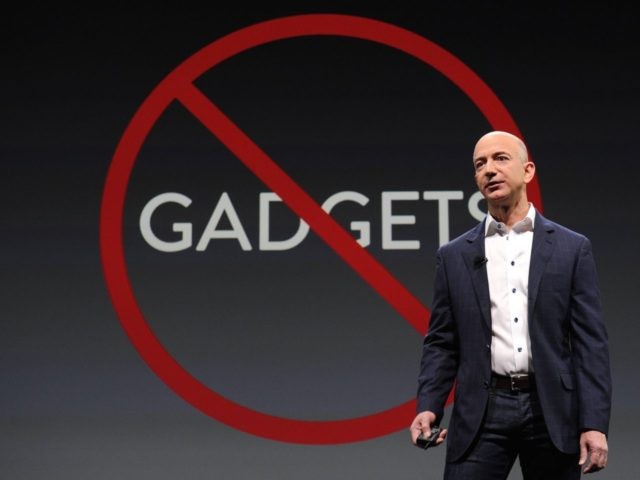Amazon’s “Fire” tablet sold out for the holidays and is on a trend to double last year’s startlingly high rate of growth as the company pursues a “basic but good” strategy.
Amazon CEO Jeff Bezos likes to say that 25 years ago he could load “one whole day’s sales in his car.” That would have been difficult this year, with Amazon selling an average of 67,000 Amazon Fire Tablets a day.
The secret to Amazon’s (AMZN-OTC) hardware success is coupling a streaming box, streaming stick, wireless speaker and home assistant to Amazon’s Internet “Fire Stick.” As a result, most of the company’s physical products sold out before the end of the holiday season. As an example of the continuing demand, Amazon’s Fire HD8 tablet sold out during Christmas and is now on back order with an estimated delivery date of 3-6 months.
According to tech analyst Max Greve, Fire’s greatest benefit to Amazon the company is its propensity to drive Prime membership growth. Every hardware item Amazon sells has one common characteristic: “it could be used without a Prime subscription in a halting, disjointed way.” But these items are “infinitely more valuable and enjoyable” with a Prime membership, especially since “Prime members get free video content to watch on their Fire sticks, free music to listen to on their Echo devices, free photo storage for their phones and tablets, etc.”
Priced at just $99 a year, Prime subscriptions are designed to alter the behavior of Amazon customers. Once the customer has subscribed, she is motivated to get maximum value from her investment.
Consumer Intelligence Research Partners estimated this summer that Amazon had 63 million Prime members among its shoppers—a 19 million increase over last year. More importantly, they estimated that Prime membership increases consumer purchases of Amazon physical goods by 2.4 times over non-Prime members.
“Prime is a somewhat different service than it was two years ago,” Mike Levin, partner and co-founder of CIRP, told Fortune Magazine. “Amazon has expanded its media offerings greatly, including exclusive video content, HBO programs, streaming music, and now personal photo storage.”
CIRP estimates that Prime members became more than half of Amazon’s total shoppers on a daily basis sometime in 2015. But they also became more than half of the total customer base in 2016. Despite Prime customer’s average orders tending to be smaller, because of free shipping without a minimum, Prime members are more than three times more likely to order over $800 in merchandise per year.
Amazon CEO Jeff Bezos recently commented, “… we don’t … make money when people buy our devices. We … make money when people use our devices.”
Most Wall Street analysts have interpreted this to be a reference to all the digital content including TV shows, movies, music, apps, games, books, and more. But in a virtuous cycle, customers can buy Echo devices that allow customers to order through Alexa voice recognition without ever going near their computer.
Max Greve forecasts that spiking Amazon hardware sales will quickly be followed by spiking Prime memberships. He estimates 2017 hardware sales will cause a growth of 20-40 million Prime memberships and contribute an extra $9-$18 billion in sales over Amazon’s other growth initiatives.

COMMENTS
Please let us know if you're having issues with commenting.